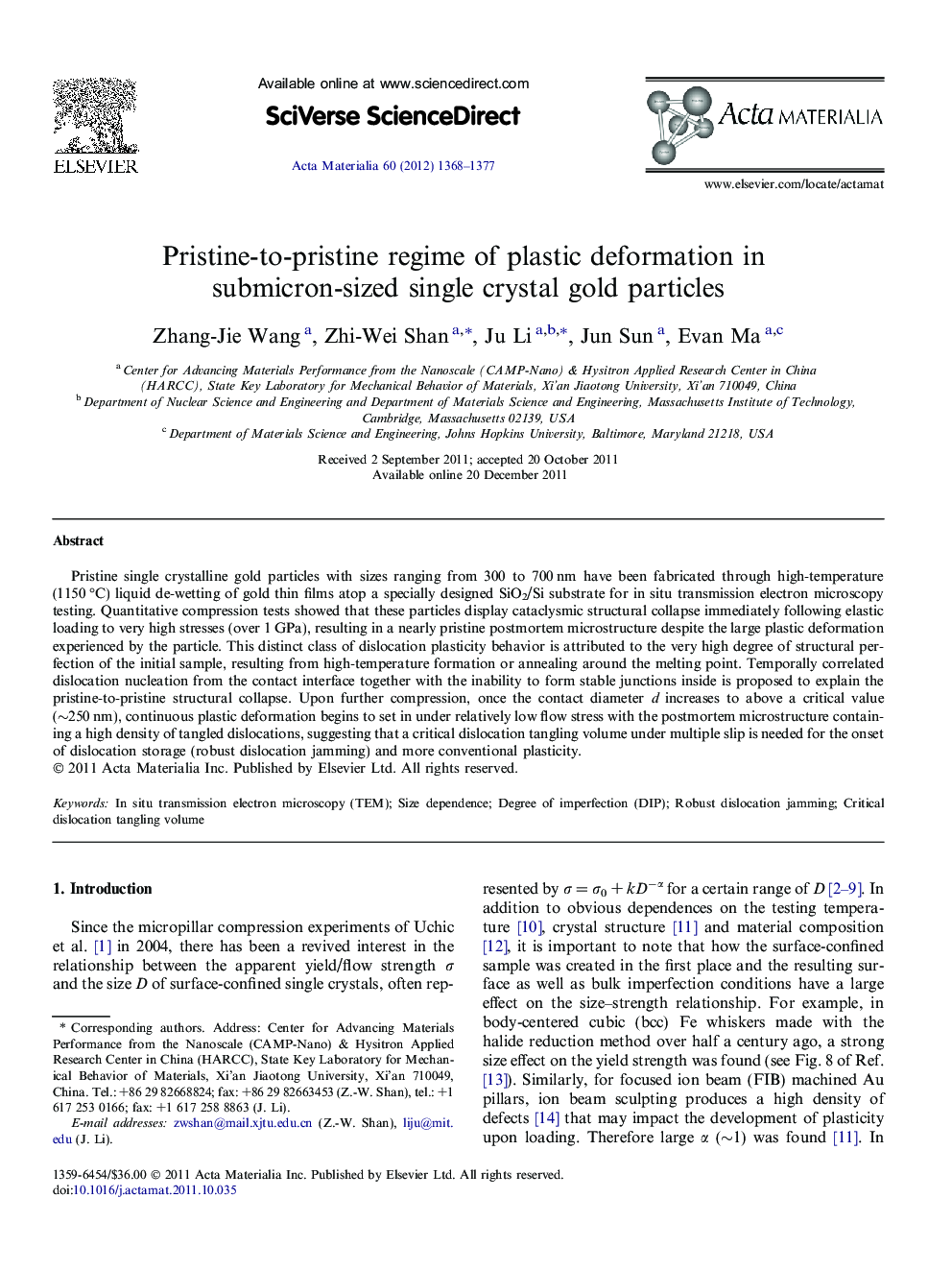| Article ID | Journal | Published Year | Pages | File Type |
|---|---|---|---|---|
| 10620549 | Acta Materialia | 2012 | 10 Pages |
Abstract
Pristine single crystalline gold particles with sizes ranging from 300 to 700 nm have been fabricated through high-temperature (1150 °C) liquid de-wetting of gold thin films atop a specially designed SiO2/Si substrate for in situ transmission electron microscopy testing. Quantitative compression tests showed that these particles display cataclysmic structural collapse immediately following elastic loading to very high stresses (over 1 GPa), resulting in a nearly pristine postmortem microstructure despite the large plastic deformation experienced by the particle. This distinct class of dislocation plasticity behavior is attributed to the very high degree of structural perfection of the initial sample, resulting from high-temperature formation or annealing around the melting point. Temporally correlated dislocation nucleation from the contact interface together with the inability to form stable junctions inside is proposed to explain the pristine-to-pristine structural collapse. Upon further compression, once the contact diameter d increases to above a critical value (â¼250 nm), continuous plastic deformation begins to set in under relatively low flow stress with the postmortem microstructure containing a high density of tangled dislocations, suggesting that a critical dislocation tangling volume under multiple slip is needed for the onset of dislocation storage (robust dislocation jamming) and more conventional plasticity.
Related Topics
Physical Sciences and Engineering
Materials Science
Ceramics and Composites
Authors
Zhang-Jie Wang, Zhi-Wei Shan, Ju Li, Jun Sun, Evan Ma,
